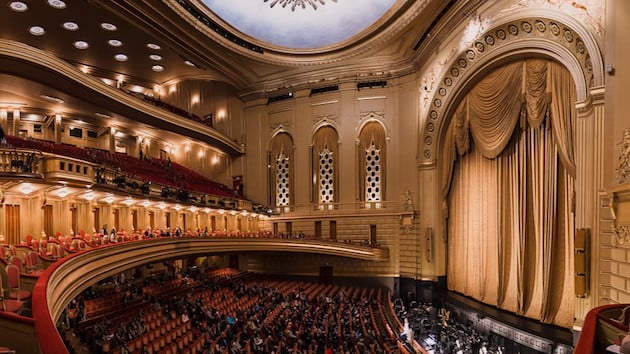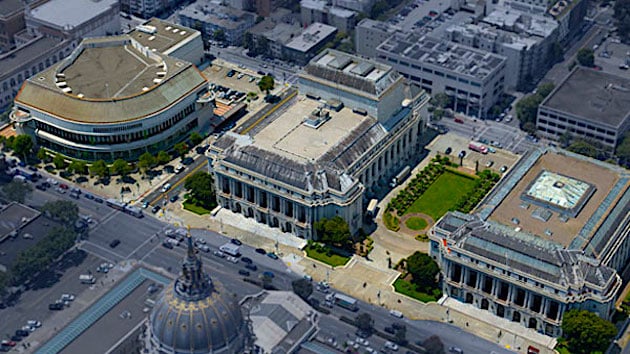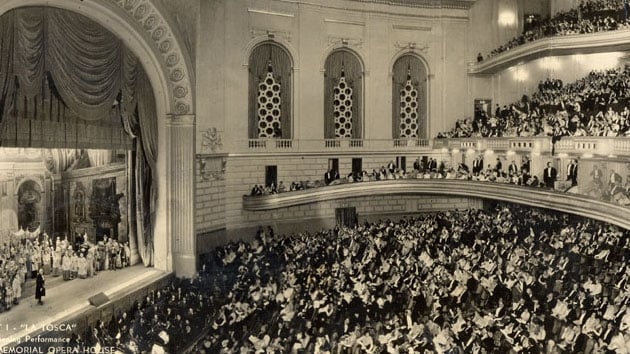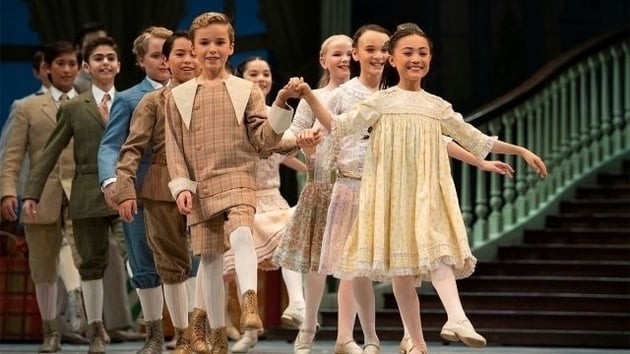
What could be worse than the closure of the SF War Memorial Opera House by COVID-19, making SF Opera and SF Ballet homeless, from March 7 to an unknown future date?
The answer: two consecutive closures, crippling the two organizations further.
But as of today, the shadow of that second closure has lifted because the “landlord,” the SF War Memorial Performing Arts Center, agreed to postpone a project previously scheduled to close the Opera House for more than three months next year.
It was not an easy decision because the final phase of the $3.7 million Opera House seat replacement installation, scheduled for May–August, 2021, has been in the plans for years, and actually began in 2013, when192 box seats were upgraded.
In 2015, 610 balcony and 278 balcony circle seats were upgraded, which left for the future 1,174 orchestra, 274 grand tier, 596 dress circle seats, and creation of new accessible-seating areas. With the postponement, gone is the hope for the “refurbished” Opera House reopening on Sept. 10, 2021, the opening night of the SF Opera season.
Ongoing closure of the Performing Arts Center weighs heavily on many organizations using the Center’s venues: the War Memorial Opera House, Davies Symphony Hall, Zellerbach Rehearsal Hall, Herbst Theatre, Green Room, Wilsey Center’s Atrium Theater, and the Education Studio.

Why is replacing seats such a big deal? First, there are 3,126 of them. Second, they are — except for cleaning, adjustments, and, now and then, reupholstering in the orchestra section — the seats that came with the building when it opened in 1932. Third, there is a lot more to the project than swapping seats.
So, many old seats must be replaced, but when? That was always a problem, especially back in the days before Davies Hall opened in 1980, and the symphony, opera, and ballet shared the War Memorial year ’round. And it’s a big scheduling headache today, with COVID-19 wreaking havoc all around.
Perhaps even more importantly, the so-called seat upgrade goes well beyond simply replacing seats. For years, there has been a demand for viewing and comfort improvement, and that’s an essential part of the plan.

A spirited debate over installing Supertitles on the back of chairs, as the Metropolitan Opera has done, died down, and there are no plans for that at this point. Another debate, over cup holders, is unresolved; the official word is that it’s “still being assessed.” Additional upgrades will include new pathway lighting, floor repair, and carpet replacement.
Here’s what the official announcement calls for:
While preserving the historic integrity, beauty, and acoustics of this cultural landmark, improvements in the theater will include new custom seats ... designed to reflect the aesthetics of the Opera House. [The new seats] will be wider, have greater leg room, be positioned at a more comfortable height, and will reflect the latest in ergonomic support.
Sightlines to the stage from the orchestra section will be improved by the new seat design and a subtle staggering of seats along the center aisle of the theater."
The promise is for the new seats to provide better comfort by providing more legroom, lifting and widening the cushion area, and using sculpted dense foam to provide support.
There will be some seat loss in the orchestra section, resulting in an approximate two percent reduction in the number of seats in the house. This is the result of efforts to improve sightlines through staggered placement in the center orchestra sections and the addition of wheelchair accessible platforms in the side sections.
The project is being managed by the San Francisco War Memorial and Performing Arts Center in partnership with SF Ballet and SF Opera, with support from theatrical consultant Shalleck Collaborative and the San Francisco Department of Public Works.
Montreal-based Ducharme Seating, a company with expertise in historical theaters, is designing and manufacturing the seats. Ducharme’s work can be seen in venues such as the David H. Koch Theater in New York’s Lincoln Center, Academy of Music and Kimmel Center for the Performing Arts in Philadelphia, and elsewhere. Threshold Acoustics is engaged to consult on the acoustic impact of the seating upgrade and installation.
Much of the project’s cost is covered by proceeds from a facility fee ranging from $1 to $3, based on seating section, added to tickets for SF Ballet and SF Opera in recent years, with the City of San Francisco funding additional architectural and design services related to the accessible-seating portion of the project.
Rescheduling, says the announcement, “will allow for the possibility to keep as much performance activity as possible in the Opera House once it is safe to re-open to the public.” No date has been set for resumption of the postponed project.
SF Opera will try to keep the announced dates for its fall 2020 season (if the pandemic allows), beginning on Sept. 11, and for summer, 2021, it’s April 25 – May 16, moved up to allow seat replacements, and notwithstanding the postponement, still April-May, instead of the usual June-July.

The Ballet’s Nutcracker season is unalterably in December, and the 2021 season, not yet announced, is expected to run January to the April beginning of the modified SF Opera summer season. Previously, there was talk of SF Ballet holding discussions with BroadwaySF to present its last two programs of the 2021 season in the Orpheum Theater.
Asked this time about possible changes in scheduling, an SF Ballet official said “we are still in the process of weighing the scenarios and hope that more information will emerge in the coming weeks.”
A word to the nostalgic with extra space at home: The old seats will not be available for purchase; they will be disposed of with finality, and the reasons for that decision will have to be the subject of a future essay.




